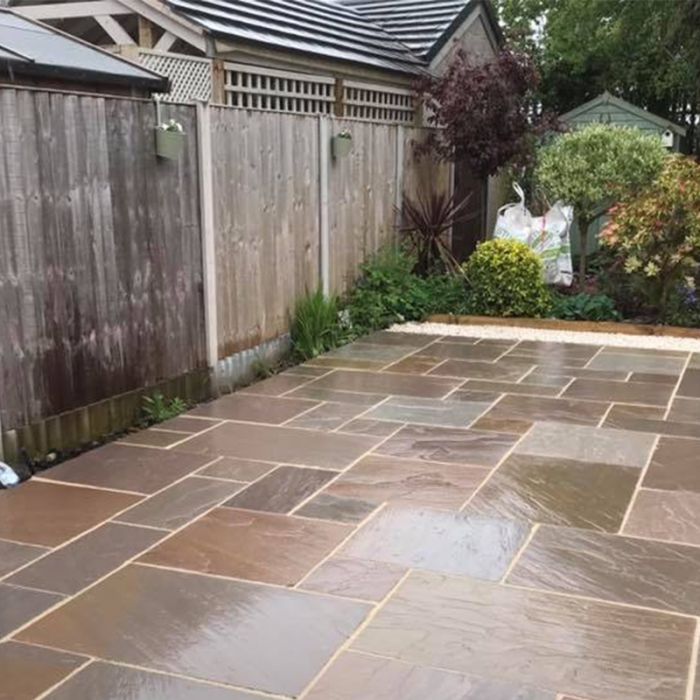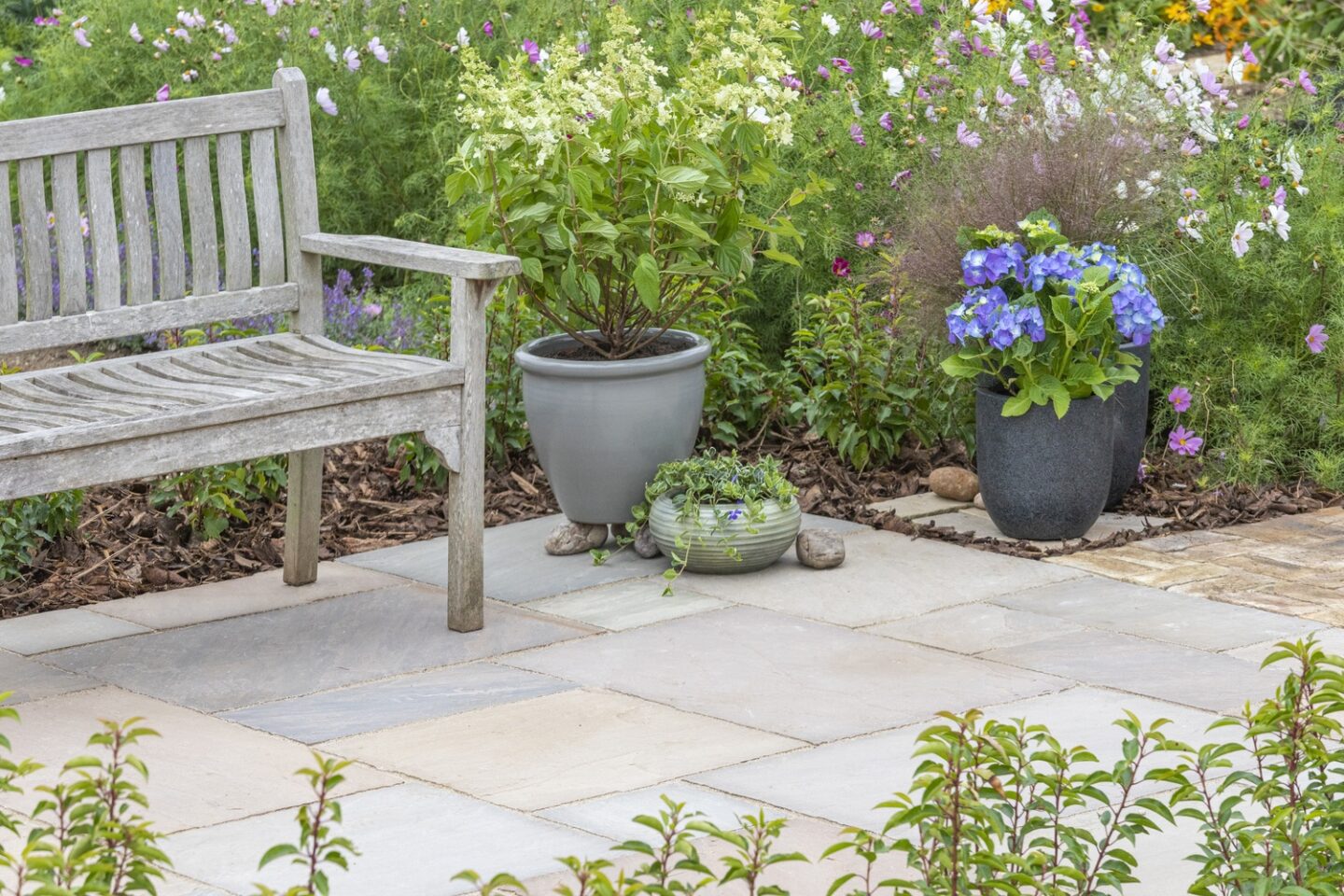Share
28 April 2021
Spotlight on Sandstone
As the days get longer and the weather warmer your thoughts may naturally move towards gathering family and friends in the garden or perhaps taking on an extension or remodelling project on your home.
However, for many people making a decision about what their patio or flooring should look like is not always that easy. That's why it's important to begin by learning about the variety of options on offer. With different materials, colours and textures, you can discover a wide range of choices and in doing so, find something that you love. This blog concentrates on the many appealing properties of Sandstone paving and flooring.

Fossil Sandstone Paving 
Strata Stone Blenheim
A bit about Colour
When thinking about sandstone, many may bring to mind the grand buildings in cities such as Bath and York, but that is just an example of the blonde type of sandstone. Visit Edinburgh or Glasgow and one will notice there is also a dark red sandstone. Indeed, it is possible to tell the age of buildings in Edinburgh from the colour of the stone, as the red sandstone came later with the arrival of rail connections from quarries in the west of Scotland.
Similarly, different parts of the UK offer varied colours, such as the grey-green sandstone found in Herefordshire. In fact, several shades of sandstone are available, including:
- blonde
- red
- grey
- cream
- brown

Why is Sandstone good for Paving and Flooring?
Sandstone is a type of sedimentary rock, it is highly resistant to weathering which makes it ideal for paving and patios, and as it’s fairly soft it can be easily split and shaped. If looked after it is strong enough to last for decades. It is also widely used in the UK because it’s in plentiful supply with sandstone quarries found around the country and an array of imported Indian sandstone as an alternative.
When it comes to colour, sandstone is a material that offers far more variety than you might imagine. As it is formed from nature itself, the colours, patterns, and hues found in any individual piece are completely unique which makes for a very natural and characterful looking patio or floor once laid.
Sandstone is naturally non-slip so it can be used for internal floors, though it is porous so will need to be sealed to prevent staining.

What are my choices?
Sandstone flagstones are available in a variety of styles including tumbled, hand-cut, sawn edge and antique with either a smooth, polished or riven texture, so there is a range to suit any contemporary or traditional design.
The variety of sandstone is reflected in our own ranges, which means that you can mix and match, or pick a particular colour that suits your tastes and the wider décor of your home or garden.

Does Sandstone need much Maintenance?
As sandstone is a natural product it is not adversely affected by the British climate, however some annual maintenance will be required to keep it in tip top condition.
As sandstone is porous, avoid using a power-washer as this may destroy the surface of the stone and cause it to split and crack. Instead wash it each Spring with warm soapy water and a hard brush.
Internal floors will need to be sealed or waxed to prevent staining.

View our full range of Sandstone Paving and Sandstone Flooring now! For more information on any of our ranges contact [email protected]


